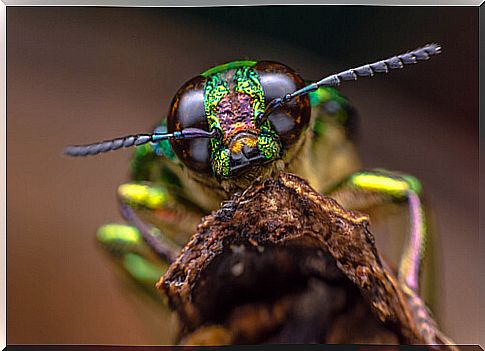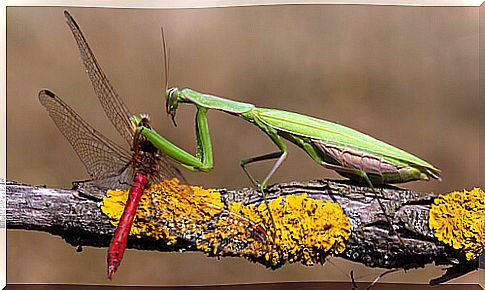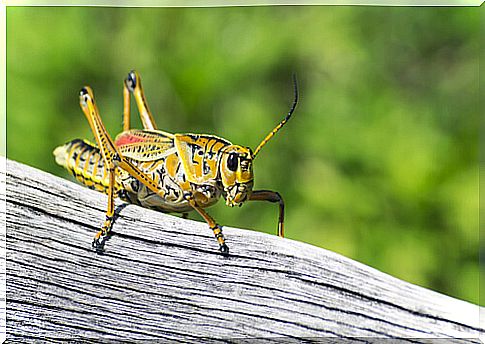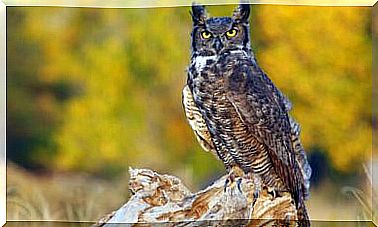Do Insects Feel Pain?

The human being usually has an anthropocentric vision of the events in the natural world. When we watch a cricket being eaten alive by a praying mantis, or a moth fighting for its life in a spider’s web, it is hard not to think “this has to be real agony.” Animals perceive, by default, many sensations shared with humans, such as pain.
But can we extrapolate the painful sensations that we have perceived in the past with which an invertebrate can feel? Are your nervous structures an impediment when it comes to perceiving stimuli as intensely as we do? Here we try to give you the answer.
About the pain
Pain is an unpleasant sensory experience that can be experienced by all living things with a central nervous system. The physiological function of this sensation is to warn the animal that an area of its body is subjected to a stimulus that can cause injury.
This, naturally, generates a succession of responses and mechanisms in order to avoid or escape the focus of damage.
Do insects have a central nervous system?
This is the first question to ask after reading the official definition of the term, as it seems to be a requirement for the body to perceive pain. The answer is yes.
Insects have a very basic central nervous system, based on a brain, a subesophageal ganglion, and a ventral chain of nerves that extend throughout the body.
Nociceptors, in vertebrates, are nerve endings that are responsible for transmitting pain-related nerve impulses to the brain. Insects, in general, do not present them. That is why it is complex to speak of painful experiences in these invertebrates, at least as we perceive them as people.

Do insects feel pain?
This question initially posed does not have an entirely clear answer. Different philosophical currents usually distinguish between the ability to respond to a painful stimulus and the experience and understanding of pain.
Several studies indicate that, although insects flee from painful stimuli in ways similar to those that a mammal would, these responses could be mediated by much simpler neural mechanisms.
This fact is based on various evidences, since invertebrates tend to use mutilated limbs, they continue to feed in many cases while they are being eaten by others, or they can even consume parts of their own body.
Would a human being be capable of doing the same in an agonizing situation? The answer is no, and perhaps this is because we subjectively experience the painful sensation, beyond the perception of pain itself.
However, as we have previously anticipated, there is no clear answer. The fact that an insect does not respond in a way that is to be expected in a human being does not imply that there is no emotional component to pain, but that there may be different degrees of perception and understanding with different responses.
A question of evolution
Because experiencing the sensations with the central nervous system of an insect is impossible, one way to understand pain in invertebrates is to turn to evolutionary questions.
Why would natural selection promote the appearance of pain in insects? From an evolutionary sense, features develop when a benefit outweighs their costs. Nervous systems are expensive in the animal world, and developing a series of complex neural interconnections is energetically very expensive.
Therefore, if the same biological response (running away from the negative stimulus) is going to occur, whether or not the pain is emotionally integrated , what benefit does it have to spend energy on a complex nervous system?
In humans and other vertebrates this may make sense, since knowing pain emotionally and knowing how to interpret it can warn us of future dangerous situations and fix dysfunctionalities in our body, but this does not seem to be the case in insects.

To conclude, it is necessary to clarify that at no time is animal abuse justified, be it of dogs, fish, grasshoppers or flies. We don’t really know what the perception of pain and agony is like in invertebrates, and therefore we can only speculate.
What is in our power is to respect the members of the natural world that surround us, be they of the species, family or taxon they are, they all deserve consideration and empathy.








